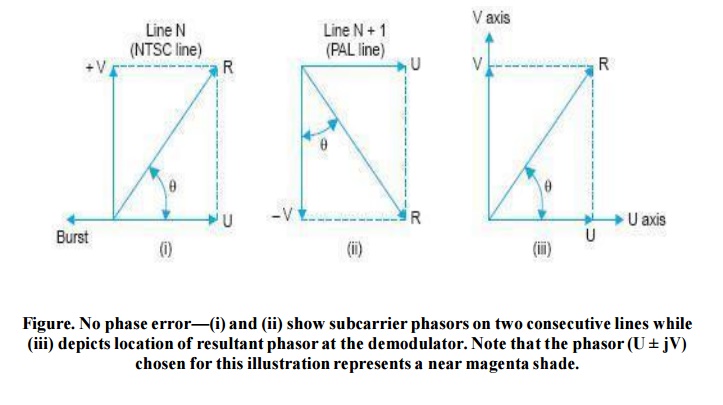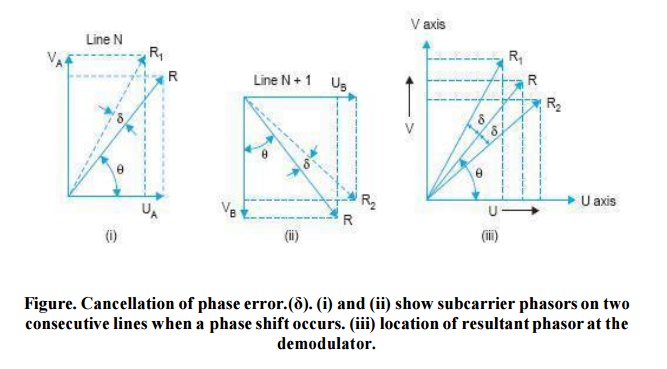Chapter: Television and Video Engineering : Colour Television Systems
Cancellation of Phase Errors
CANCELLATION OF PHASE ERRORS
As
already pointed out the chroma signal is susceptible to phase shift errors both
at the transmitter and in the transmission path.
This
effect is sometimes called ‘differential phase error’ and its presence results
in changes of hue in the reproduced picture. This actually results from a phase
shift of the colour sideband frequencies with respect to colour burst phase.
The PAL system has a built-in protection
against such errors provided the picture content remains almost the same from
line to line.
This is
illustrated by phasor diagrams. Figure (a)
shows phasors representing particular
U and V
chroma amplitudes for two consecutive lines of a field. Since there is no phase
error the
resultant phasor (R) has the same amplitude on both the lines.
Detection
along the U axis in one synchronous detector and along the V axis in another,
accompanied by sign switching in the latter case yields the required U and V
colour signals. Thus correct hues are produced in the picture.
Now
suppose that during transmission the phasor R suffers a phase shift by an angle
δ. As shown in Fig (b) (i), the corresponding changes in the magnitude of U and
V would mean a permanent hue error in the NTSC system.
However,
in the PAL system ( (b) (ii)) the resultant phasor at the demodulator will swing
between R 1 and R 2 as illustrated in Fig. (b) (iii). It is now obvious that
the phase error would cancel out if the two lines are displayed at the same
time. In actual practice however, the lines are scanned in sequence and not
simultaneously.
The colours
produced by two successive lines, therefore, will be slightly on either side of
the actual hue.
Since the
lines are scanned at a very fast rate the eye due to persistence of vision will
perceive a colour that lies between the two produced by R 1 and R 2
respectively.
Thus the
colour seen would more or less be the actual colour. It is here, where the PAL
system claims superiority over the NTSC system.


Related Topics